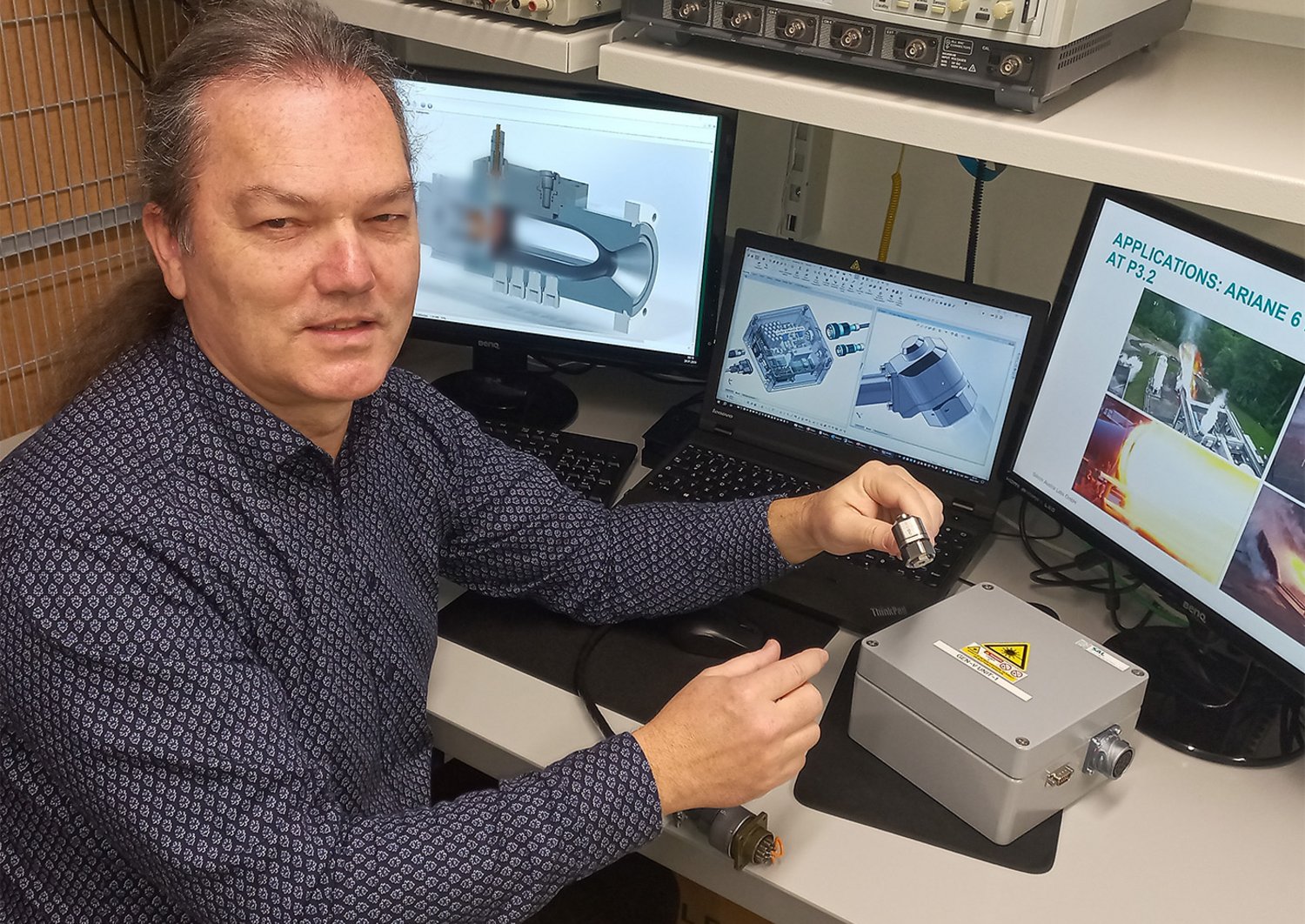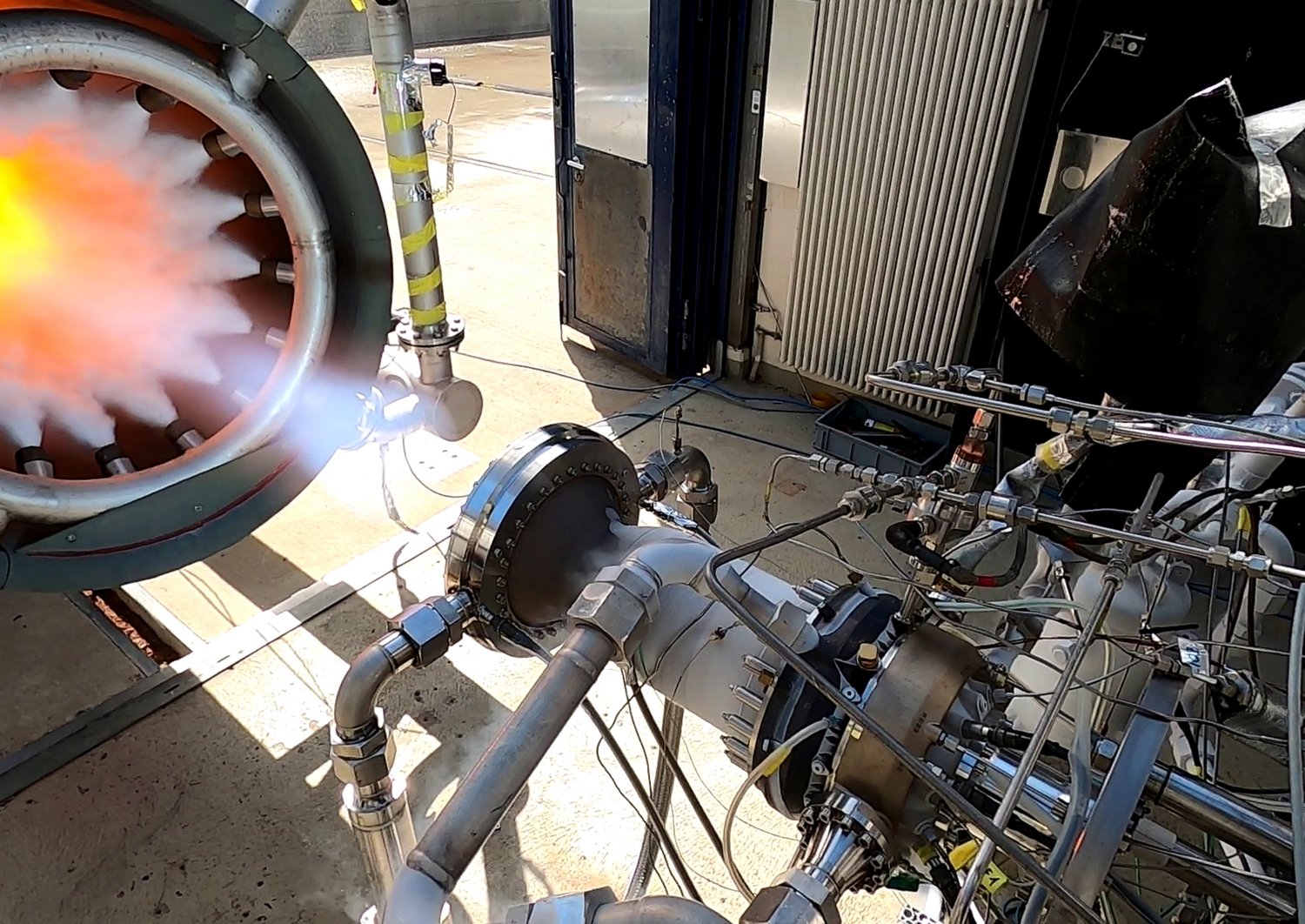Originally developed for the automotive and the aviation industry, over the last ten years the system has been adapted for aerospace propulsion applications in cooperation with the German Aerospace Center (DLR), the aerospace company Ariane Group and the European Space Agency (ESA). Currently, preparations are underway to further develop the fifth generation of the laser ignition system for series production together with Ariane Group. In the future, the system could replace established ignition systems and thus ensure a number of competitive advantages for the European aerospace industry.
Silicon Austria Labs and its predecessor, Carinthian Tech Research (CTR, merged with SAL in 2019), have been the driving engine behind the development of laser ignition systems for the past twenty years. The initial focus was on applications for the automotive and the aviation industry, in different projects together with AVL Graz and renowned aviation companies, before the aerospace industry took notice of the technology developed by CTR. As a promising alternative to current electronic and pyrotechnic ignition systems, laser ignition systems show great advantages in their weight, size, reliability and the ability to ignite engines several times in succession.
“Our laser ignition is based on extremely short and powerful flashes of light that are focused into the combustion chamber of an engine, where they generate plasma in the fuel and thus an ignition spark,” explains Gerhard Kroupa, Staff Scientist and manager of the project at SAL. “Contrary to conventional electronic ignition systems, no electrodes are needed which would not survive the high temperatures of about 3000°C in a rocket engine. Instead, there is just an optical window in the combustion chamber. This makes it possible to place the ignition point at different locations in the engine, which in turn massively increases the reliability of the ignition.”
The history of laser ignition developments at SAL
This achievement is the result of twenty years of intensive research: It all started in 2003 when SAL (at that time still CTR) developed the first generation of a laser ignition system for the automotive industry, which was tested on various car engines of renowned manufacturers. Over the next years, the system was miniaturized, optimized and already tested for applications in the aviation industry in its third generation in 2006. Just a few years later, the first cooperation between SAL, DLR and ArianeGroup (at that time Airbus Defense and Space) for applications in the aerospace industry was launched. From 2014, extensive tests on real rocket engines in different test beds were successfully carried out. The team reached a significant milestone in 2016, building and testing a laser ignition technology demonstrator for the upper stage engine “Vinci” of the Ariane rocket, and thus making significant progress towards a system that can be used under real operating conditions.
“The extreme conditions in and around the engine, such as extreme temperatures and vibrations, posed a big challenge for the development of the system. Additionally, the system had to be miniaturized to fully utilize the advantages in cost and weight of this new technology. We are currently working together with ArianeGroup and DLR to develop a system that distributes laser pulses from one laser head to several engines via fiber optics to further reduce costs. This is of interest for the next generation of “Cluster” engines as well as for satellite orbit control,” recounts Gerhard Kroupa.
“We are counting on the cooperation between SAL and DLR for the development of novel ignition technologies for rocket engines,” says Sebastian Soller, Project Leader R&D at ArianeGroup. “We value SAL’s comprehensive expertise in the areas of microelectronics and laser systems, but also the team’s keen willingness to meet the specific challenges of product development in the aviation and aerospace industry. These challenges do not stop with the difficult operating conditions but continue with the high requirements for accompanying analyses, verifications and quality checks. We are looking forward to taking the next steps toward a market launch of laser-based ignition systems for aerospace applications together with SAL.”
“Previous and current joint research projects highlight how excellent and effective cooperations with SAL are. SAL’s outstanding technical expertise in the field of laser-based ignition technologies is truly unique,” emphasizes Michael Börner, Group Leader at the Institute for Space Propulsion at DLR.
The Future of laser ignition systems for the aerospace industry
To be able to use the system in commercial applications, SAL has concluded a license agreement with ArianeGroup to industrialize the system and produce a first small series.
“At SAL, researchers work on innovative ideas of the future before they are even used in the industry. We lay the ground for future applications. The license agreement for rocket engines is the best example of considerable progress made possible by our research. The cooperation between SAL and Ariane proved to be highly fruitful for both partners!”, shares SAL CEO Christina Hirschl.
But SAL is not stopping there: The team is working on several funding projects to further develop the system. Among others, the project team is currently focusing on the development of a fiber-coupled multi-spark ignition system, which will further improve laser ignition.
Selected publicationsOverview and recent applications of the miniaturized HiPoLas ignition system Advances in high-energy ns-pulse laser beam delivery through optical fibers |
About Silicon Austria Labs (SAL)
Silicon Austria Labs GmbH (SAL) was founded in 2018 as a top non-university research center in the field of electronic based systems. At its locations in Graz, Villach and Linz, research is conducted on key technologies in the fields of Microsystems, Sensor Systems, Power Electronics, Intelligent Wireless Systems and Embedded Systems. SAL brings together key players from industry and science and thus valuable expertise and know-how, and conducts cooperative, application-oriented research along the value chain. The aim is to accelerate the value creation process from idea to innovation – with excellent research and economic benefits. Owners are the Republic (50.1%), the Provinces of Styria and Carinthia (10% each), the Province of Upper Austria (4.95%) and the Association for the Electric and Electronics Industry (24.95%).
Contact
Silicon Austria Labs GmbH
Isabella Preuer, BA BA MA
Head of Communications & PR
+43 664 832 97 73









